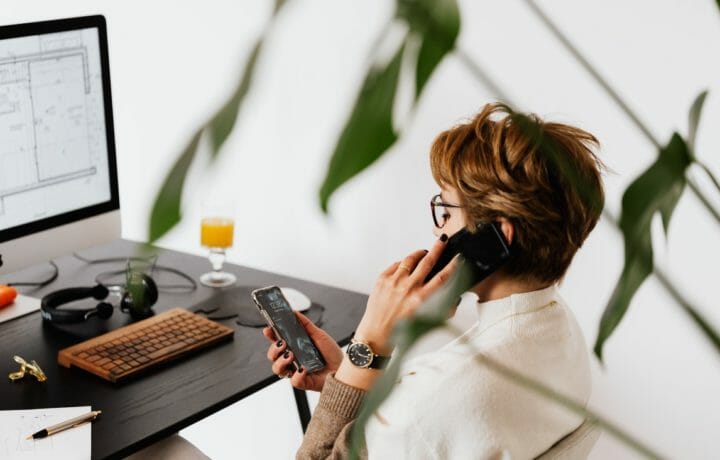How often has this happened to you over the past six months: you’re working on an email, the phone rings and you answer, and then someone walks up and asks a question? They’re all impossible to simultaneously answer, and each incident changes your focus. Many face the challenge to do more with less by reverting to smart phones, texting, and multiple email accounts.
The Typical Multitasking Approach
When studying the email habits of more than 50,000 employees, the average worker spent 40% of their day multitasking with email, texts, and instant messaging. On average, most people cannot go for more than 6 minutes without checking their devices. UC Irvine professor Gloria Mark found that workers average only three minutes on any given task before switching and about two minutes using any digital tool before switching.
The Problem with Multitasking
Neuroscientists and cognitive psychologists who explored multitasking found that conflict in the brain, during two interfering tasks resulted in the brain struggling and trying to figure out the details of what was going on. Instead of multitasking, the brain sees this as the functional equivalent of a massive distraction. Psychological research found multitasking is not a matter of attention divided, but of attention diverted.
The problem with diverted attention is that it reduces efficiency because of task switching costs. Instead of simultaneously accomplishing something, the result of doing both at the same time is less efficient. The brain becomes overstimulated and foggy thinking occurs. Multitasking can actually reduce your problem solving performance by the equivalent of 10 IQ points. People who regularly multitask have poorer short term memories which diminishes problem solving ability. Lastly, multitasking impairs decision making because as tasks are constantly switched, so too are the prioritization of each item. As a result, sufficient mental energy to wisely make decisions for more important issues decreases.
How Do We Change Our Tasking Approach
To get more done in less time, start with focusing on one task. When attention stays on one task at a time, that effort is more likely to get the proper attention and get completed. Saying no to unnecessary tasks or less critical items allows for prioritization. Additionally, constraints can boost creativity, scarcity in resources allows for unconventional solutions to problems.
- To conduct more solo focused work start by turning things off. Limit your time with emails on and work in data bursts. By communicating in a focused manner, this makes teams more productive and creative.
- Breaks are key for refueling and refocus. Work to schedule breaks how they fit into your schedule. Whether it’s for five minutes during every half hour or following the 52/17 rule(52 minutes on, 17-minute break).
- Following lunch most people face a lack of motivation and need the removal of temptations to multitask. Do this by blocking distracting websites. When boredom creeps in workers are more likely to switch over to checking multiple websites. This requires knowing when you’re most likely to reach energy depletion.
Multitask Less and Accomplish More
By gradually walking away from the multitasking pit of despair towards a deliberately focused workplace, the likelihood to face information overload diminishes. By recognizing why multitasking does no one any favors and how to change behaviors, it is possible to accomplish more and better work.




